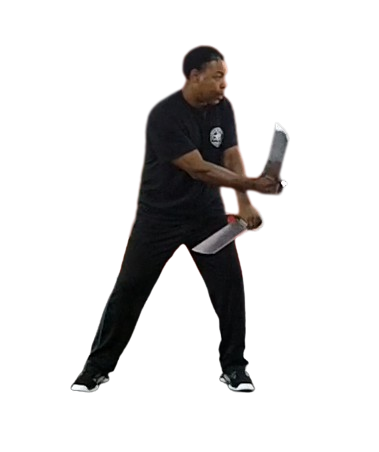Wing Chun Weapons: Understanding the Butterfly Swords and Long Pole Techniques
Introduction:
In addition to empty-hand techniques, Wing Chun, a Chinese martial art, also includes training in traditional weapons. Two iconic weapons associated with Wing Chun are the Butterfly Swords (Baat Jaam Dao) and the Long Pole (Gwun). These weapons not only serve as tools for self-defense but also enhance a practitioner’s understanding of the principles, techniques, and strategies employed in Wing Chun. In this article, we will delve into the techniques, characteristics, and historical significance of the Butterfly Swords and Long Pole in Wing Chun.
I. The Butterfly Swords (Baat Jaam Dao):

a. Origins and Characteristics:
The Butterfly Swords, often referred to as Wing Chun swords, are short, double-edged blades with a distinct butterfly-shaped guard. These weapons are believed to have originated during the late Qing Dynasty, influenced by the prevalent use of various polearms and short swords in southern China. The unique design of the Butterfly Swords allows for close-quarters combat and quick, fluid movements. Their compact size and versatility make them effective for slashing, stabbing, and blocking techniques.
b. Techniques and Training:
Training with the Butterfly Swords involves mastering specific forms, drills, and applications. The Bart Jaam Dao form focuses on fundamental movements, footwork, and coordination between the weapons. Practitioners learn techniques such as cutting, thrusting, trapping, and redirecting an opponent’s attacks. The training also emphasizes the use of simultaneous attack and defense, exploiting the short-range advantage of the swords to maintain constant pressure on the opponent.
c. Practical Applications:
The Butterfly Swords, with their compact size and maneuverability, excel in close-quarters combat. Wing Chun’s principles of centerline control, simultaneous attack and defense, and economy of motion are seamlessly applied to the use of these weapons. The Butterfly Swords enable practitioners to deliver fast, precise strikes while maintaining a solid defense. Their use enhances a practitioner’s understanding of timing, distancing, and the manipulation of an opponent’s weapons.
II. The Long Pole (Gwun):
a. Origins and Characteristics:
The Long Pole, also known as the Dragon Pole, is a traditional staff weapon associated with Wing Chun. It typically measures around 9 to 10 feet in length and is made from durable hardwood. The Long Pole’s design allows for extended reach and powerful strikes. It is believed to have been influenced by the staff weapons used in various Chinese martial arts systems and military training.
b. Techniques and Training:
Training with the Long Pole involves practicing specific forms, drills, and applications that develop strength, stability, and precise movements. The Gwun Gerk (pole leg) form focuses on fundamental techniques, stances, and footwork unique to the Long Pole. Practitioners learn techniques such as thrusts, sweeps, spins, and blocking. The training also emphasizes fluid transitions, coordination of upper and lower body movements, and generating power through proper body mechanics.
c. Practical Applications:
The Long Pole’s extended reach and striking power make it an effective weapon for maintaining distance, controlling the opponent’s movements, and delivering powerful strikes. Wing Chun’s principles of centerline control, leverage, and timing are applied to Long Pole techniques. By utilizing sweeping movements, thrusts, and circular strikes, practitioners can keep opponents at bay and create openings for follow-up techniques. The Long Pole’s training develops strength, coordination, and the ability to adapt to different weapon lengths and opponents.
III. Historical Significance:
The Butterfly Swords and the Long Pole have significant historical and cultural importance within the Wing Chun system. These weapons are not only practical tools but also represent the ingenuity and adaptability of Wing Chun practitioners throughout
history. The Butterfly Swords, originating from the late Qing Dynasty, were influenced by the prevailing weapons of the time, while the Long Pole’s development can be traced back to the Red Boat Opera performers who repurposed boat oars as weapons. Understanding the historical context of these weapons enriches the practitioner’s appreciation for the art and its evolution.
IV. Techniques and Training Methods:
Both the Butterfly Swords and the Long Pole require dedicated training to master their techniques and harness their potential. Practitioners learn specific forms, drills, and applications that emphasize proper grip, footwork, strikes, and defensive maneuvers. The study of these weapons enhances a practitioner’s overall martial arts skill set, promoting coordination, timing, power generation, and adaptability. Training with the weapons adds a new dimension to Wing Chun, allowing practitioners to explore the intricacies of armed combat.
V. Integration into Wing Chun Practice:
The Butterfly Swords and the Long Pole are integral components of Wing Chun, expanding the system’s techniques, principles, and philosophies. By incorporating weapons training, practitioners gain a deeper understanding of strategy, timing, and distance management. These weapons complement the empty-hand techniques of Wing Chun, enabling practitioners to apply their skills in a variety of combat scenarios. The Long Pole’s connection to the Red Boat Opera performers demonstrates the adaptability and creativity within Wing Chun as it evolved to incorporate the use of boat oars as weapons.
Conclusion:
The practice of weapons in Wing Chun, specifically the Butterfly Swords and the Long Pole, offers practitioners a unique perspective on martial arts training. By studying the techniques and principles associated with these weapons, practitioners enhance their physical attributes, coordination, and adaptability. The historical significance and practicality of the Butterfly Swords and the Long Pole highlight the evolution of Wing Chun and its ability to adapt to different weapons and combat scenarios. Mastery of these weapons requires dedication, discipline, and a deep appreciation for the rich heritage and cultural significance they embody. By exploring the techniques and training methods associated with the Butterfly Swords and Long Pole, practitioners can expand their skills, broaden their understanding of Wing Chun, and continue to preserve and evolve these valuable martial arts traditions.

